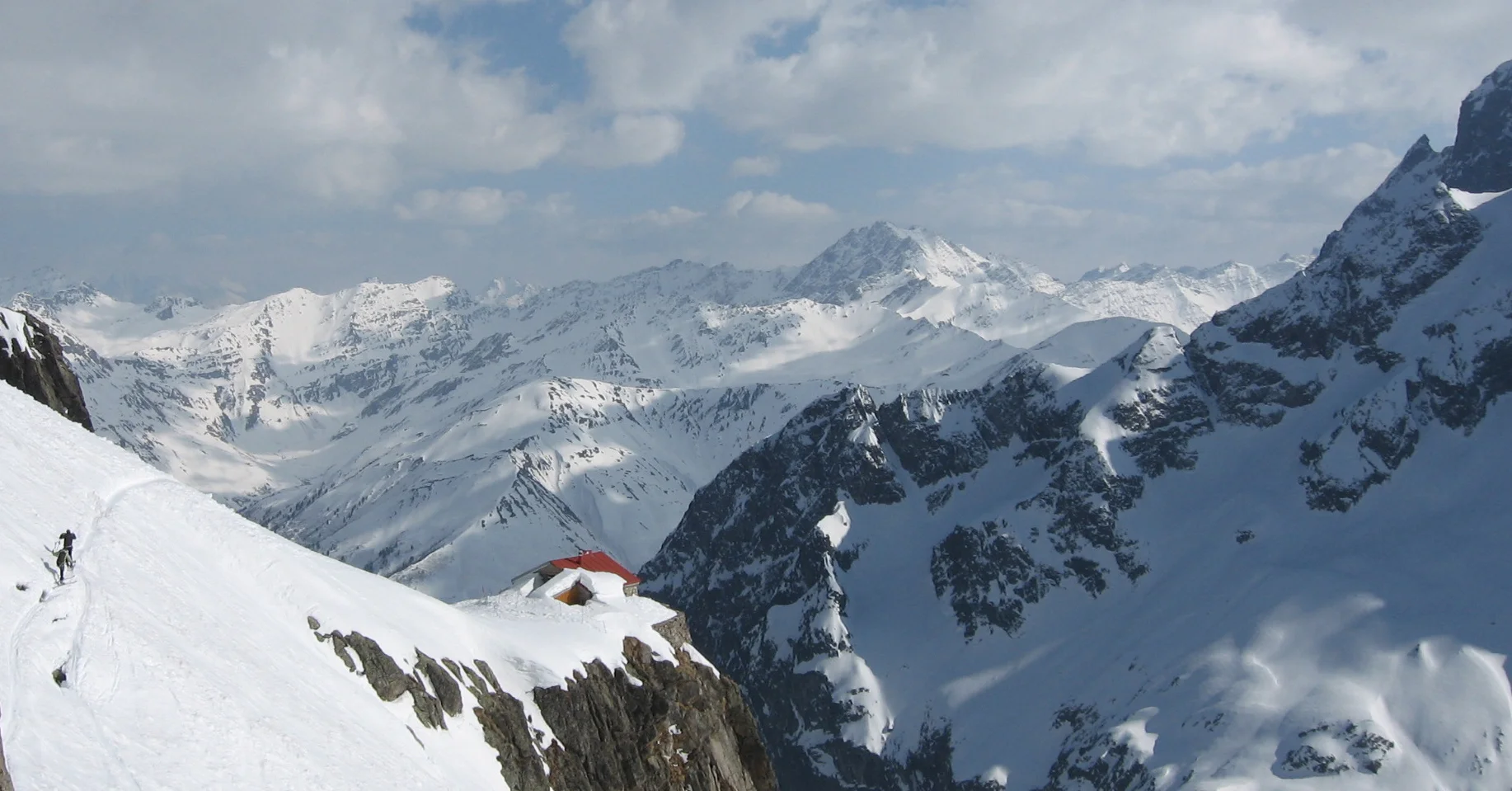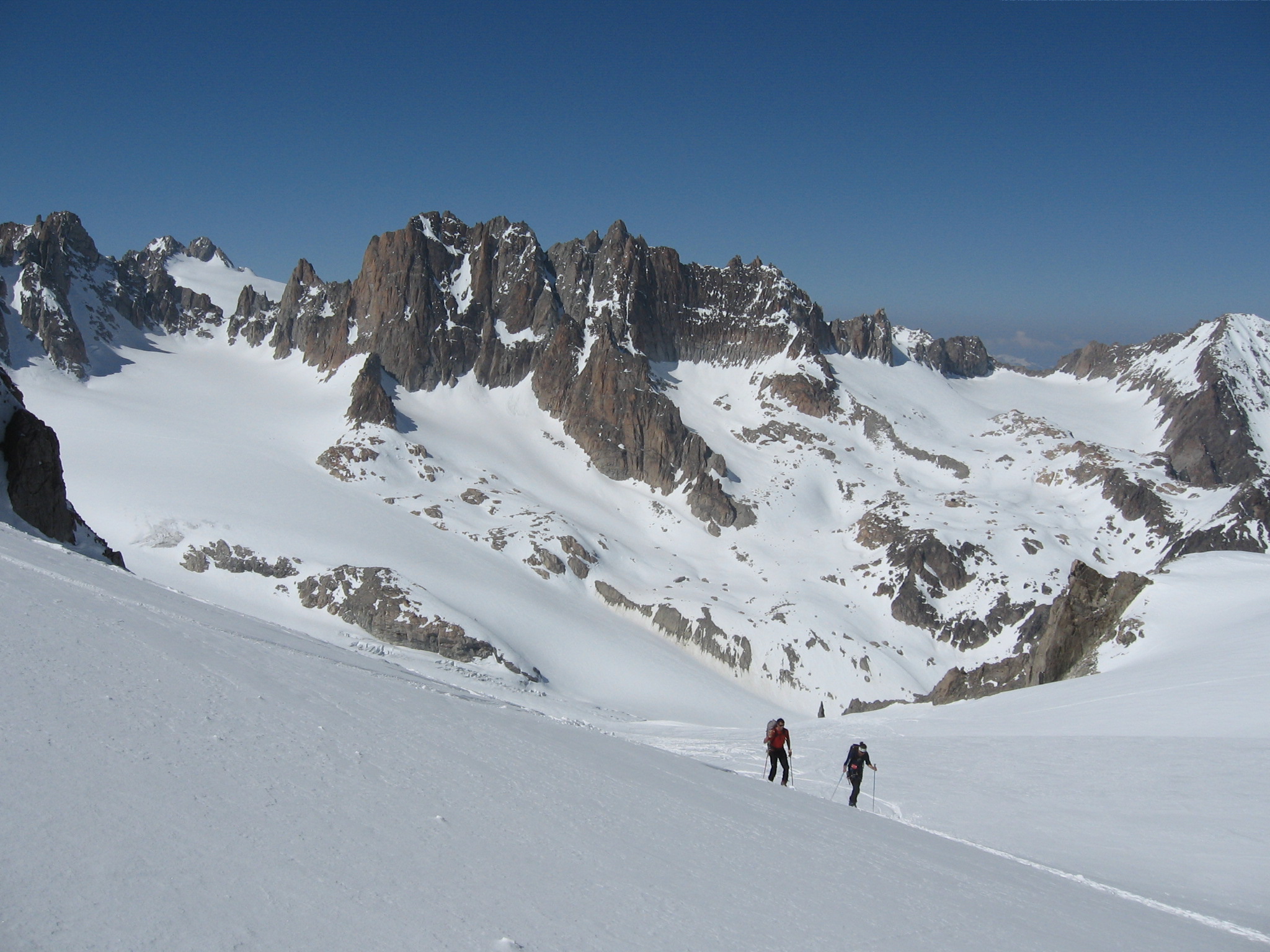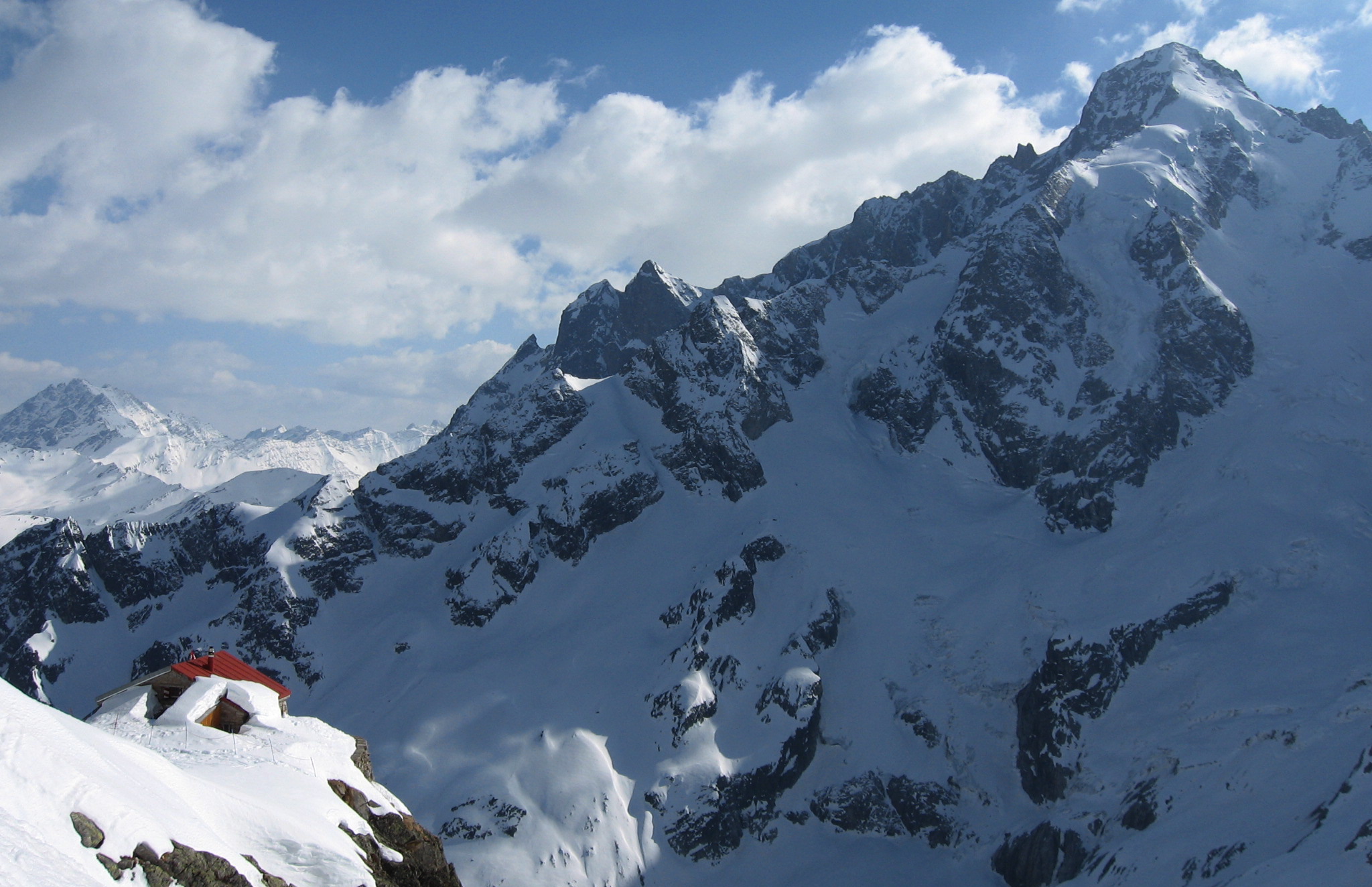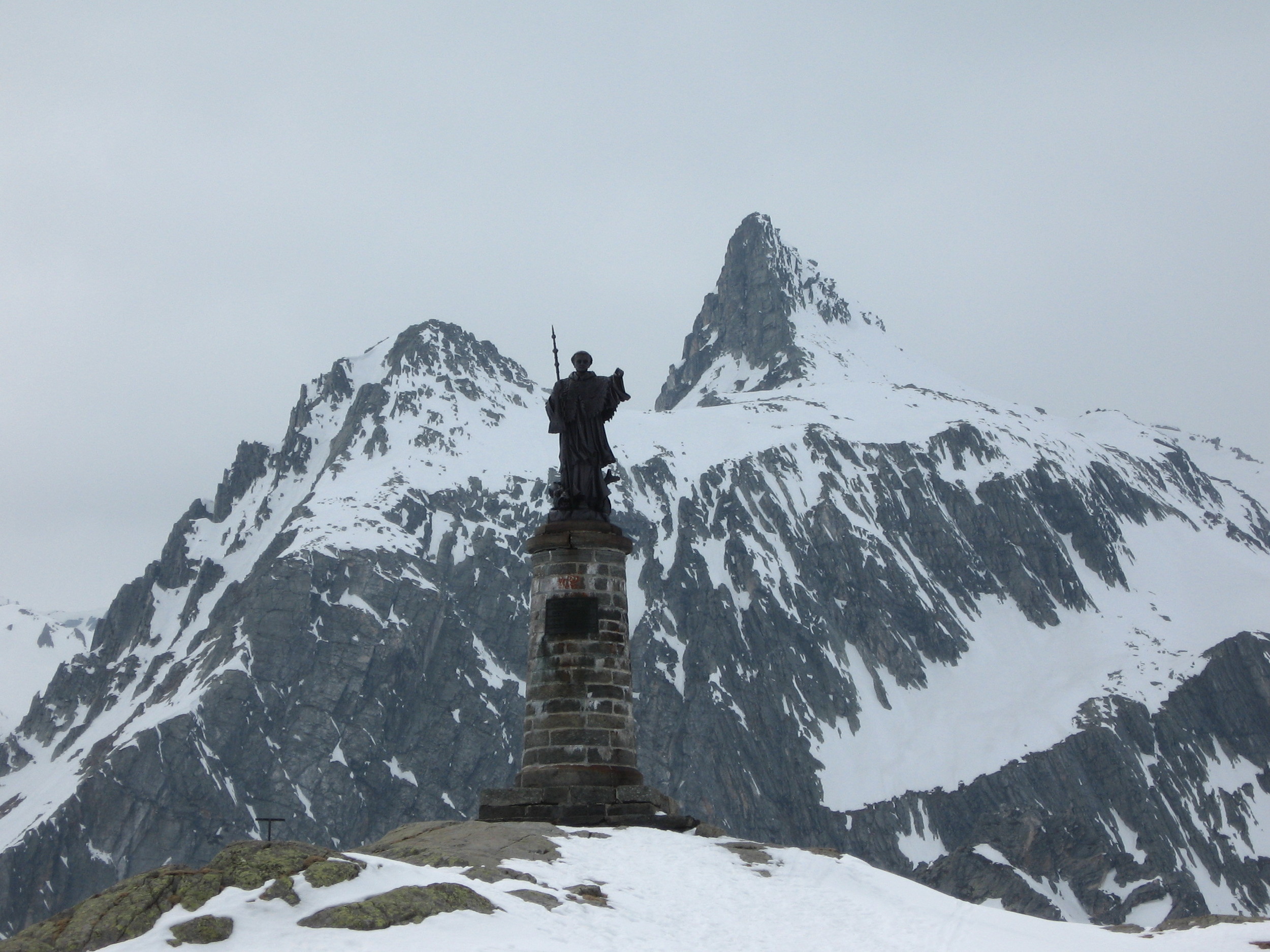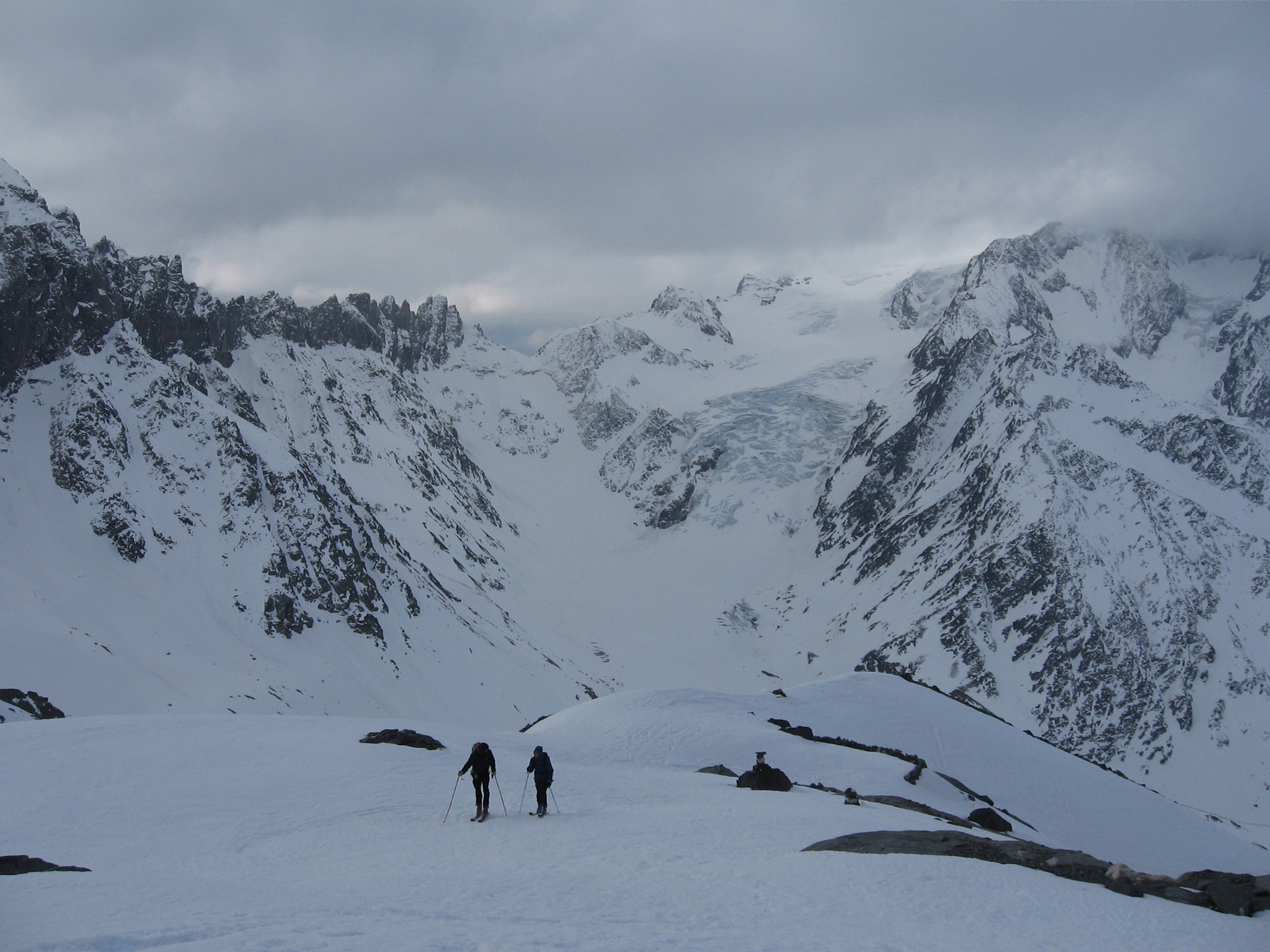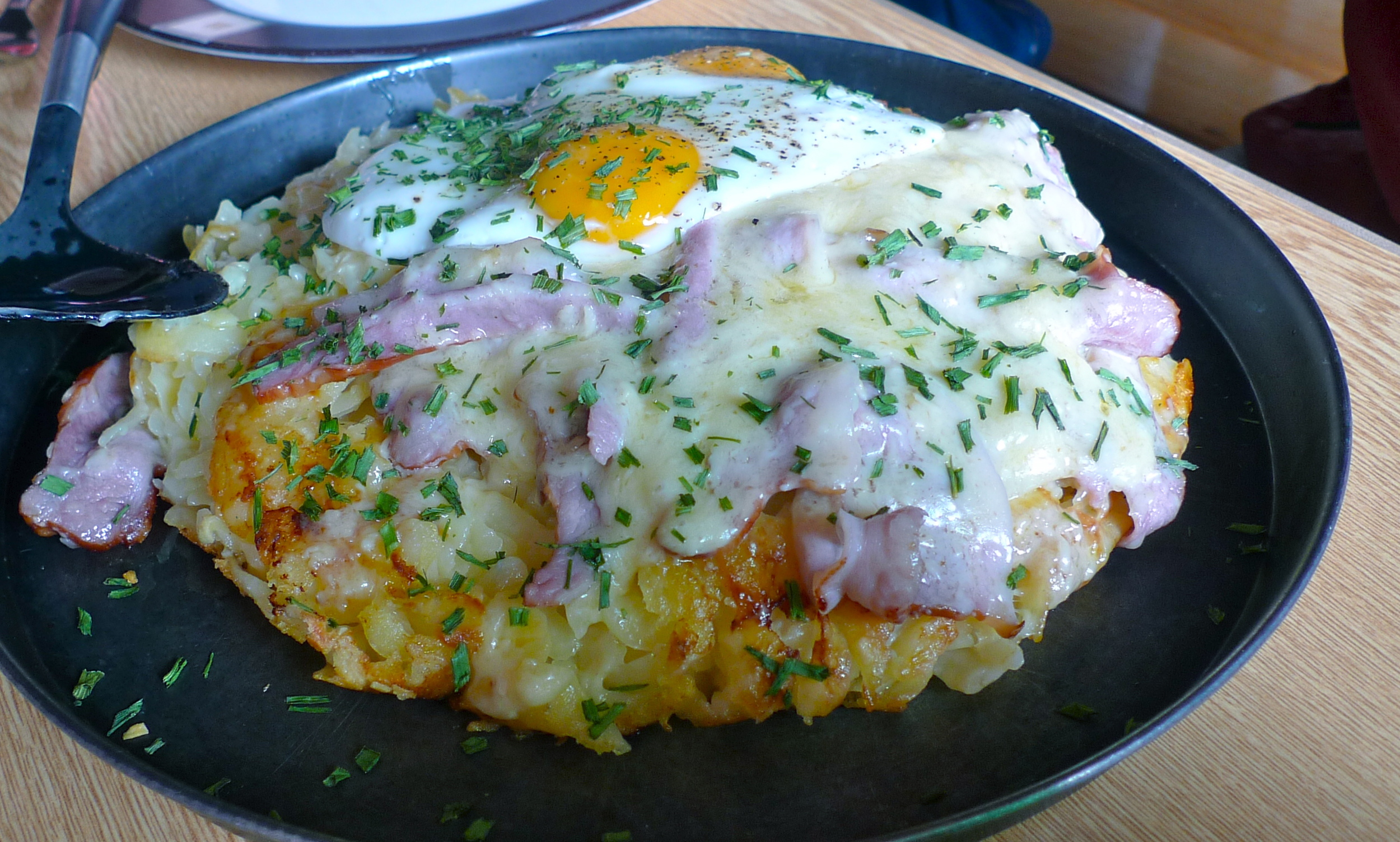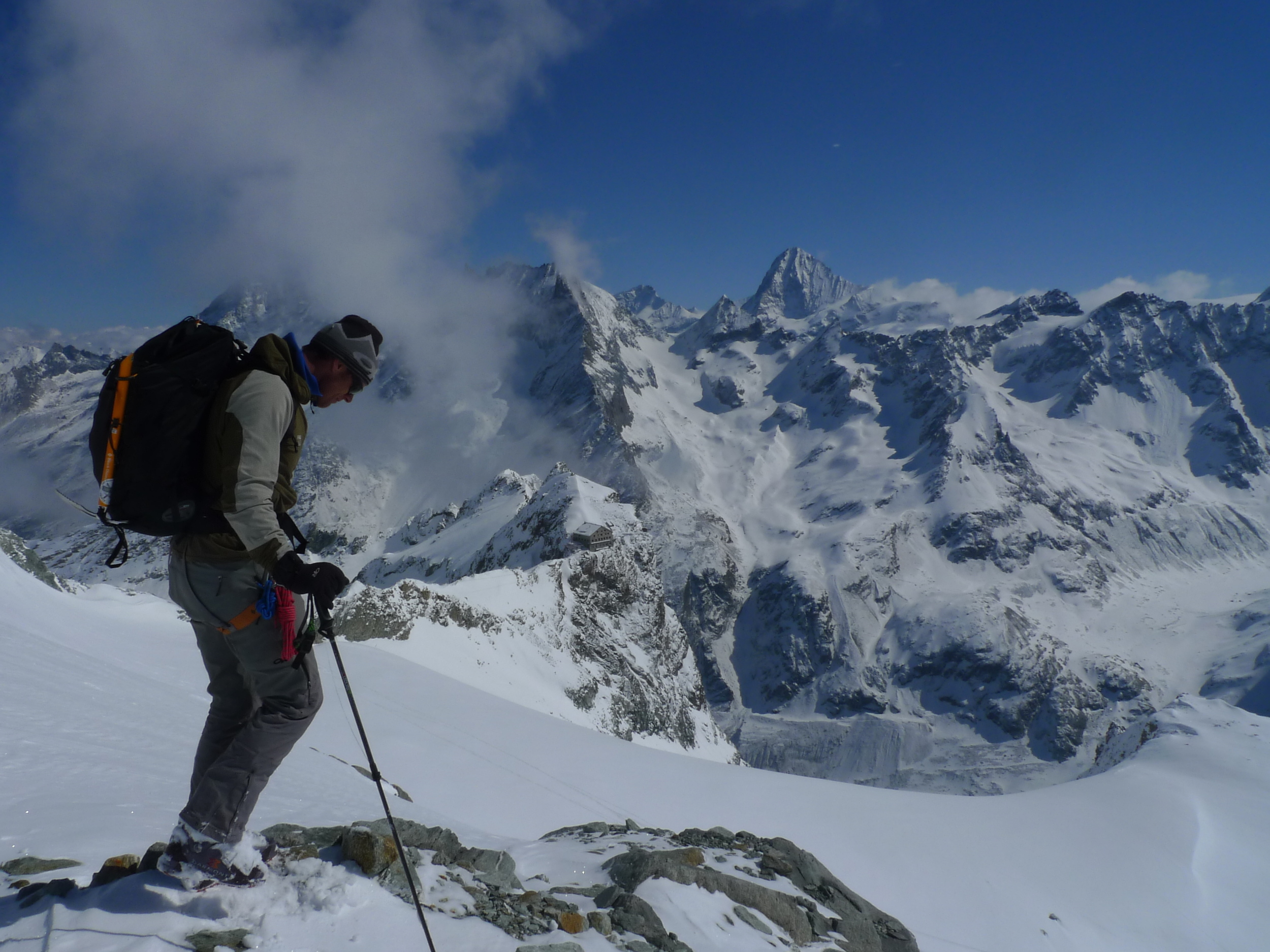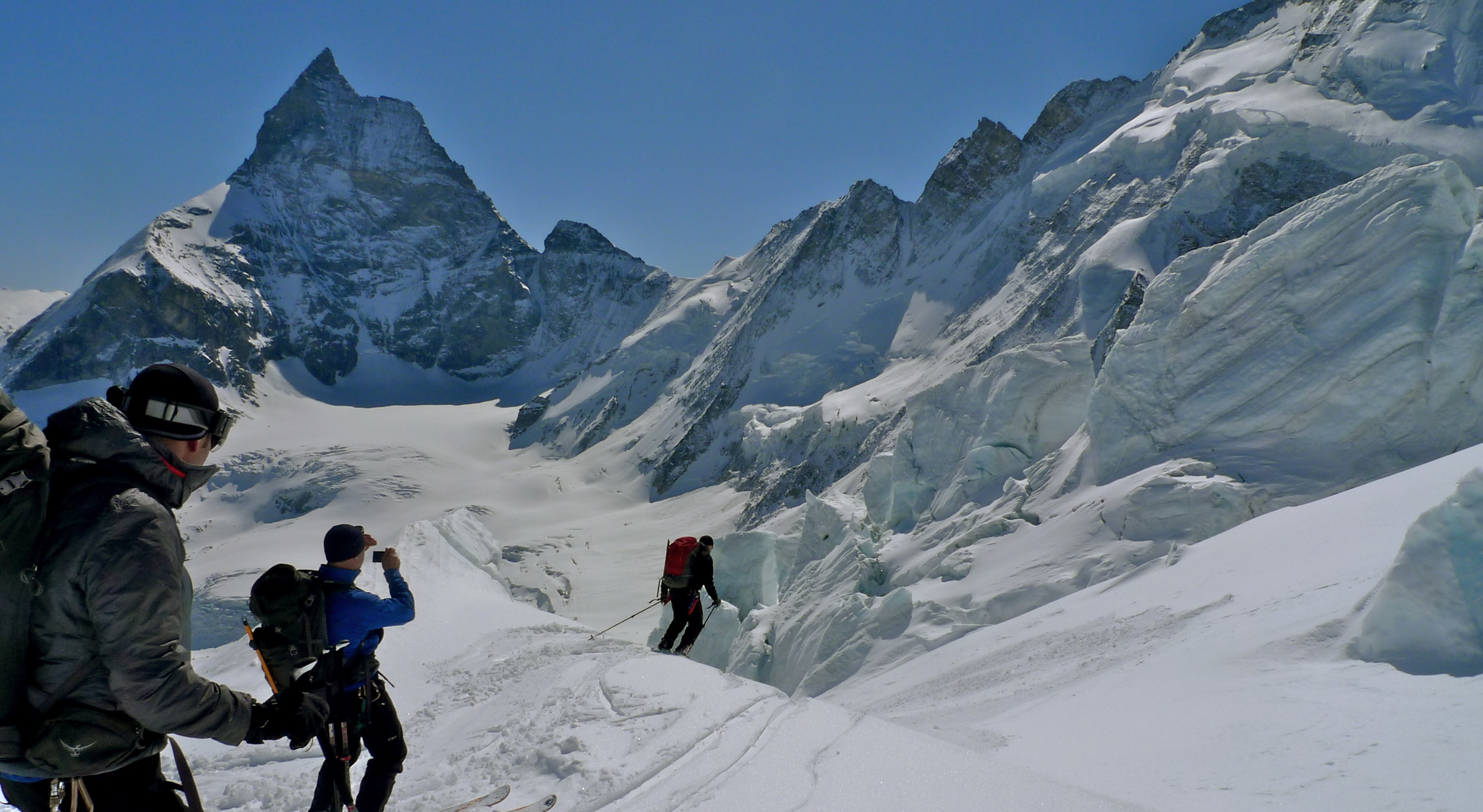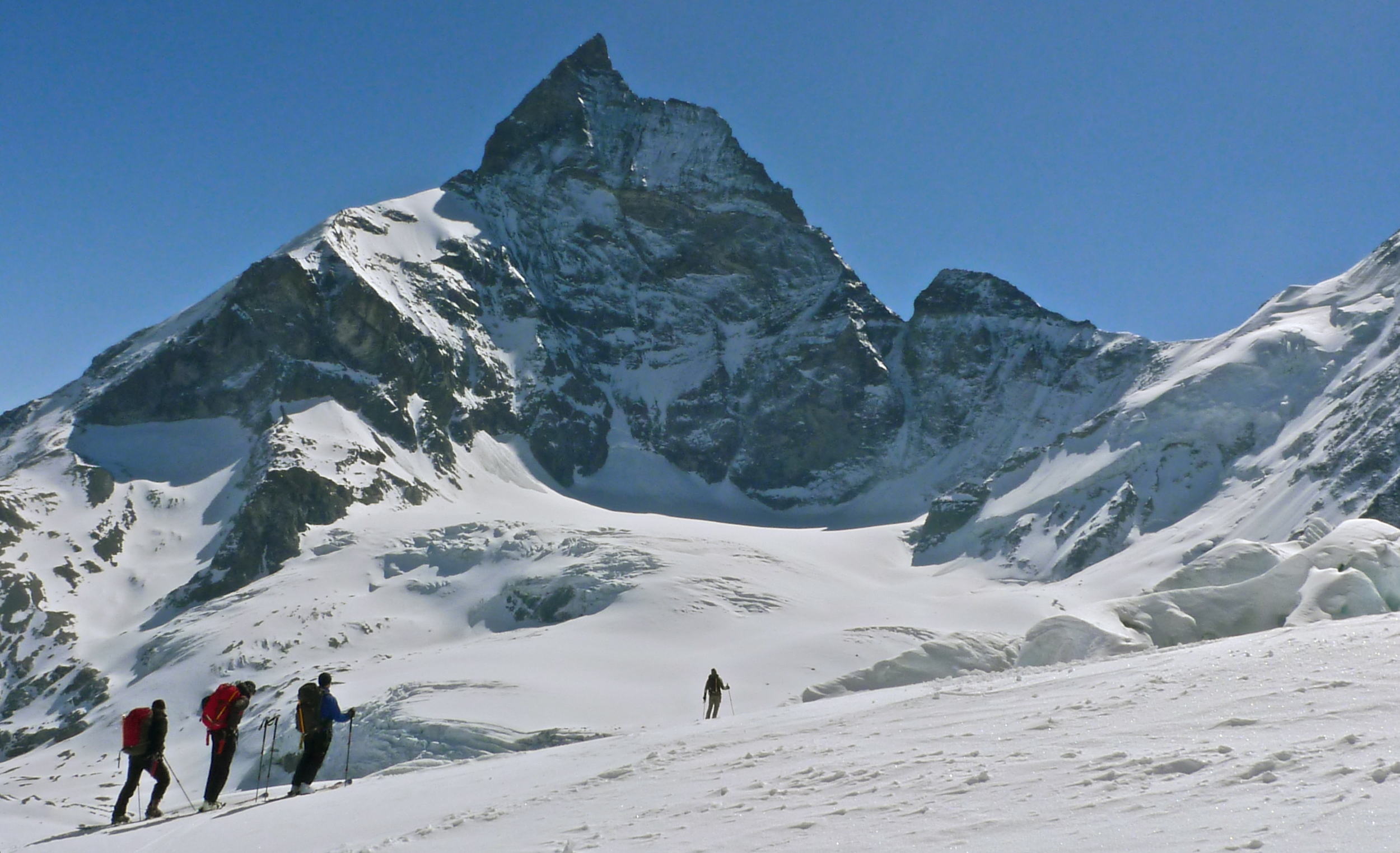The St. Bernard Haute Route
Please contact us if you are interested in a private trip for 2019.
For nearly 1,000 years, the monks of the St. Bernard Hospice have helped wayward travelers attempting to cross the Alps through snow and storm; today they welcome travelers intent on a modern mountain pilgrimage. This is a classic, challenging version of the Haute Route. It shares only one and a half days with the Verbier version, and is best for people with previous multi-day ski tour experience. While our packs remain light, the average vertical gain is greater than on the Verbier route, and there is a little bit more technical mountaineering involved. With fewer crowds and a more remote feel, this route appeals to many who enjoyed the Haute Route but would like something just a little different. Highlights include a stay at the St. Bernard monastery and a high, dramatic crossing of the Grand Combin.
Day 0: We begin our journey with some warm-up touring in the Mont Blanc Massif. This is a good chance for us to review glacier skiing protocols and technical skills, and a good beginning to our acclimatization.
Day 1: This day begins much like the Verbier Haute Route. From the top station of the Grands Montets, we ski down to the mighty Argentiere glacier. After a climb to the Col du Chardonnet, some rope work gets us down into the next valley. From here we leave behind the Verbier Haute route and head south for a crossing of the Grand Lui. Opposite the imposing north face of Mont Dolent, we ski down to the impossibly perched A Neuve hut and a well-earned meal.
Day 2: We ski down to the Val Ferret and wander through the tiny hamlet of La Fouly. Then it's a long gentle climb toward the Fenetre de Ferret and a quick excursion through Italy to the St. Bernard Hospice, where the monks have been caring for weary travelers for nearly a thousand years.
Day 3: Heading for the Valsorey hut, this day brings us back among big relief and imposing summits. The The landscape is dramatically carved by glaciers and our perch at the hut already feels high and exposed.
Day 4: An early start sees us climbing toward the Plateau du Couloir, the terrain crux of our traverse. This ingenious route crosses the Grand Combin at over 3600m of elevation (nearly 12,000 ft.). Careful route-finding keeps us above the ice-cliff on the Mont Durand Glacier, and then it's a 5,000ft run to the valley floor, followed by a short skin to the Chanrion hut.
Day 5: If conditions allow, we follow the devious Portons, a series of hanging snowfields between massive glacial streams. Then it's either high over the Pigne d'Arolla or low along the Otemma glacier to gain the Vignettes hut–and the mother of all roschti.
Day 6: Here we rejoin the more frequented versions of the Haute Route, just in time for what may be the most dramatic and rewarding day. From near the top of our last climb you can nearly reach out and touch the Matterhorn, and it's a long, exhilarating ski under its north face, down among the larches and warm alpine splendor of Zermatt. It's time to celebrate a successful Haute Route–or, if you're tight on time, you can still catch a train back to Chamonix in time for dinner.
3:1 Ratio
$2800
Price Includes:
two nights lodging in Chamonix at trip start
5 nights lodging in mountain huts
breakfast and dinner at each hut
baggage transfer from Chamonix to Zermatt
any taxis and lifts used during the trip, and guide fees.
Price does not include:
drinks and lunches along the way
ground transport from Zermatt back to Chamonix
meals in Chamonix
meals in Zermatt
equipment rentals
Pre-requisites:
Ski Ability:
This ski tour requires strong all-around backcountry skiing skills. We encounter a variety of terrain and snow conditions, and in a number of places your safety will depend on your ability to ski in control. In order to safely enjoy the Haute Route, you should feel competent with the following:
Skiing a variety of conditions, including powder, crud, glop, breakable crust, and very firm snow.
Side-slipping both forward and backward on steep, firm snow up to 45º
Skating on flat ground
Crucially, you need to ski efficiently; if variable conditions wear you out quickly, then it's time to hit the slopes and work on getting comfortable with steep terrain and funky snow.
Touring Skills:
This should not be your first ski tour, nor your first overnight ski tour. You should be fairly efficient with transitions from uphill to downhill travel, including transitions to carrying skis. It's good to be familiar with crampons and ice axe–you needn't be an expert, but some practice with moderate snow mountaineering is helpful. It's important to understand the role of time in alpine ski touring; we won't be racing up the hill, but we do have a time plan to keep. As the old saying goes, it's not how fast you go but how long you stop.
Fitness:
We will typically be moving for around 6 to 8 hours a day at a moderate pace. Be able to cover 4,000 feet of gain per day for a week carrying a 20 to 30 pound pack. Come ski with us for some prep, or let us set you up with a good guide near you who can help get you up to speed with any of these pre-requisites.
